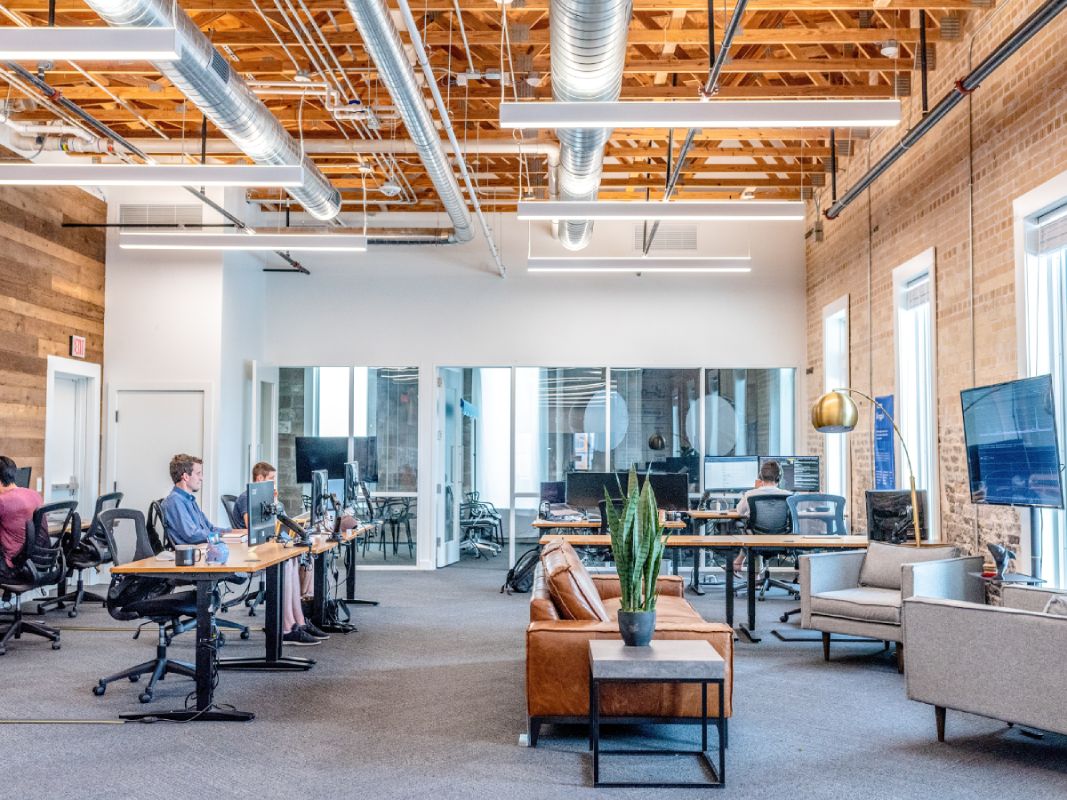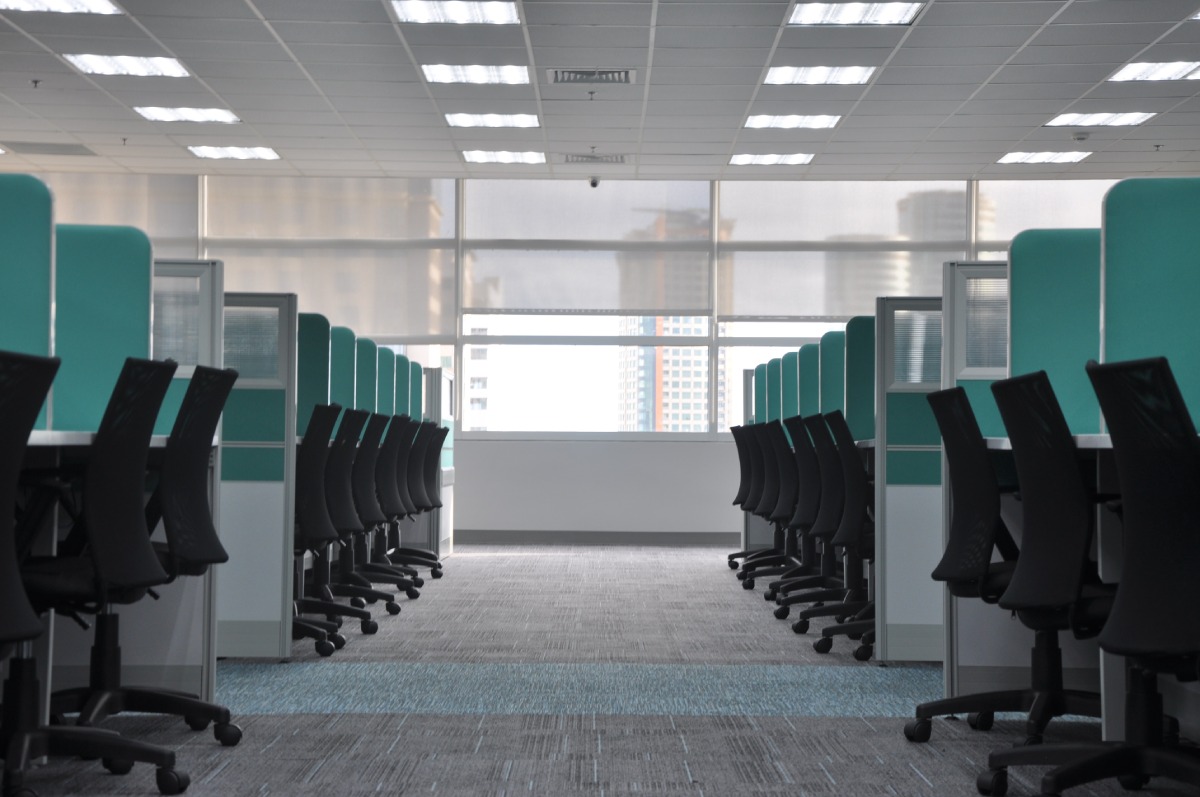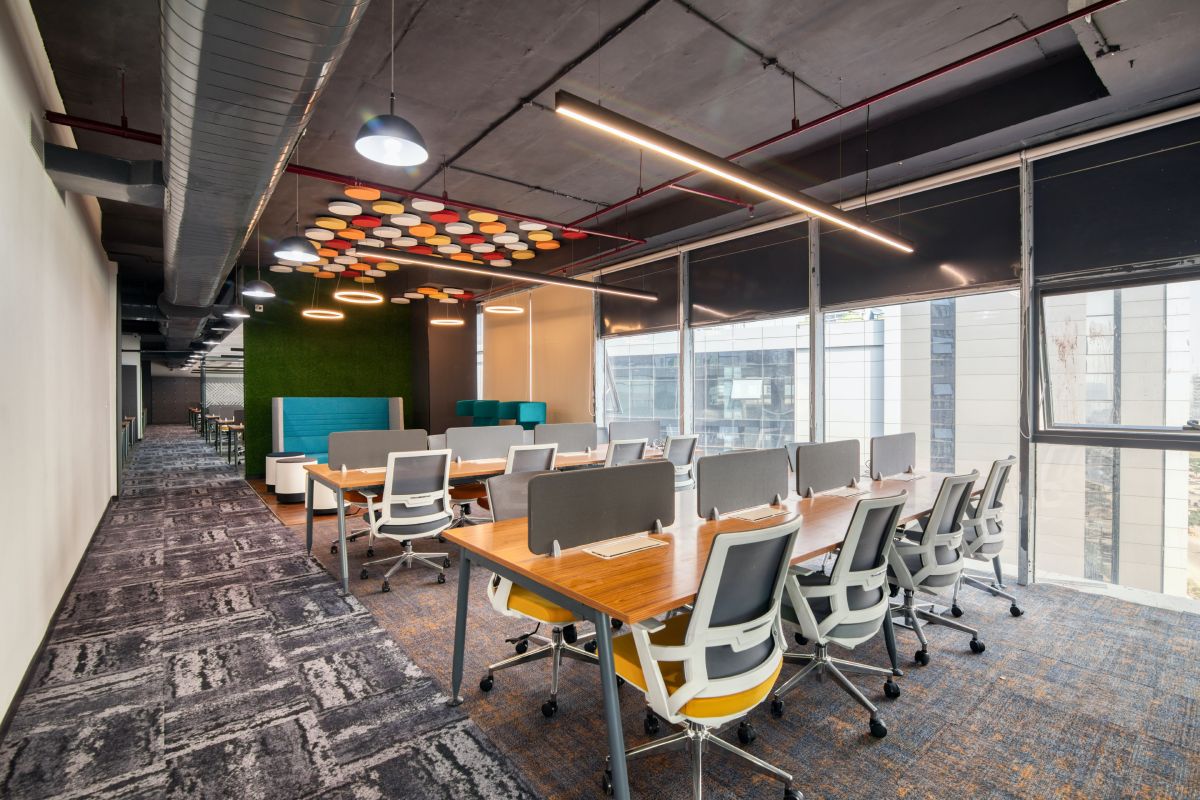Introduction
As we confront the challenges of climate change and strive towards a more sustainable future, one of the areas with a significant impact and ripe for change is the workplace. This blog post focuses on the concept of energy efficiency in the workplace and outlines strategies that employers can adopt to create greener, more sustainable work environments.
Defining Energy Efficiency
Energy efficiency is, in essence, a method of reducing the energy required to perform tasks and provide services. It can be achieved by using less energy to produce the same outcome or finding ways to make better use of existing energy sources. In the workplace, this might involve simple changes such as switching to energy-saving light bulbs, or more significant modifications such as upgrading to energy-efficient appliances and implementing smart technologies.
Importance of Energy Efficiency in the Workplace
The benefits of energy efficiency in the workplace extend far beyond reducing carbon footprint and supporting sustainability goals. It can also lead to substantial cost savings through lower energy bills, enhanced employee comfort and productivity, and improved corporate image as businesses increasingly recognize the value of demonstrating their commitment to sustainability.
Reducing energy use in the workplace also contributes to broader efforts to combat climate change. Buildings are one of the largest energy consumers, and thus, improving energy efficiency in the workplace can have a significant impact on overall energy consumption and greenhouse gas emissions.
Outline of the Post
This blog post will provide employers with an understanding of why energy efficiency should be a priority and practical steps to achieve it in their workplaces. We’ll look at common areas of energy waste, tips to improve energy efficiency, benefits of creating an energy-efficient workplace, and how to encourage employees to participate in energy-saving practices. We’ll also provide some examples of businesses that have successfully implemented energy efficiency strategies. By the end of this guide, you’ll have the tools you need to create a more energy-efficient and sustainable workplace.
The Benefits of Energy Efficiency in the Workplace
In the current age, businesses are increasingly expected to take responsibility for their environmental impact. The workplace is one area where significant improvements can be made, specifically through the adoption of energy-efficient practices. There are a multitude of benefits that come along with becoming more energy-efficient, ranging from cost savings to environmental impact and beyond.

Cost Savings
The most immediate benefit of improving energy efficiency in the workplace is the potential for substantial cost savings. As energy prices continue to rise, using less energy directly translates into lower operating costs. Energy-efficient appliances, for instance, use less electricity, natural gas, or other fuel sources, reducing utility bills. Furthermore, an energy-efficient building requires less heating, cooling, and lighting, further cutting down on costs.
Optimizing the use of natural light, turning off unused electronics, and maintaining heating and cooling systems regularly can all contribute to significant savings over time. In some cases, the cost of implementing these changes may be offset by the savings they provide, resulting in a net zero expense, or even a profit, for the business.
Enhanced Corporate Image
As awareness of environmental issues grows, so does the desire among consumers and employees for businesses to act responsibly. By implementing energy-efficient practices, businesses not only reduce their environmental impact but also enhance their corporate image.
Companies with a reputation for being eco-conscious are likely to attract customers who value sustainability, potentially driving up sales. It can also make the company more attractive to prospective employees who want to work for organizations that align with their personal values. This can lead to increased employee satisfaction and retention, reducing costs associated with turnover and recruitment.
Environmental Impact
The environmental impact of improving energy efficiency in the workplace cannot be understated. Commercial buildings are major consumers of energy, and even small improvements can significantly reduce a business’s carbon footprint.
Energy-efficient workplaces directly contribute to reducing greenhouse gas emissions, a key factor in mitigating climate change. Moreover, by decreasing energy consumption, businesses lessen the demand for energy production, which can often have harmful environmental effects. This reduction in demand can contribute to a broader shift towards cleaner, renewable sources of energy.
In summary, making a commitment to energy efficiency in the workplace not only makes good business sense but also contributes to the pressing global effort to reduce energy consumption and minimize environmental harm.
Understanding Your Workplace’s Energy Usage
In order to make your workplace more energy-efficient, it’s crucial first to understand where and how energy is being used. This understanding forms the foundation for any energy-saving initiatives, allowing you to identify high energy-consuming areas and effectively interpret energy usage data.

Energy Audit: What it is and How it Helps
An energy audit is a detailed assessment of a building’s energy use. It involves evaluating the energy consumption of various building systems, like heating, cooling, and lighting, to understand where most energy is used and where it is wasted. Audits are often performed by professional energy auditors, who can provide a comprehensive report detailing the energy usage of the building and offering recommendations for improvements.
The findings from an energy audit can guide the development of a comprehensive energy management plan. This might include suggestions for upgrading to energy-efficient appliances, improving insulation, or implementing a more efficient heating and cooling system.
Identifying High Energy-Consuming Areas
Typically, certain areas of a workplace consume more energy than others. Identifying these high energy-consuming areas is an important step towards improving energy efficiency.
Common culprits often include HVAC (Heating, Ventilation, and Air Conditioning) systems, lighting, and office equipment like computers and printers. The kitchen can also be a significant energy user, especially if it includes large appliances like refrigerators and dishwashers. Understanding which areas and systems consume the most energy can help prioritize efforts and allocate resources effectively.
Understanding the Energy Usage Data
Interpreting energy usage data can be a complex task, but it’s key to improving energy efficiency. Energy usage data often comes in the form of utility bills, which can provide valuable insights into a workplace’s energy habits.
For example, examining utility bills over a period of time can reveal patterns and trends, such as higher energy usage during certain seasons or times of day. You can use this information to implement measures like adjusting the thermostat settings during non-working hours or optimizing the use of natural light during the day.
In conclusion, understanding your workplace’s energy usage is the first step in implementing effective energy efficiency measures. By conducting an energy audit, identifying high energy-consuming areas, and interpreting energy usage data, you can develop a comprehensive energy management plan that will reduce costs, enhance your corporate image, and contribute to the fight against climate change.
Developing an Energy Efficiency Policy
Once you’ve understood your workplace’s energy usage, the next step is developing an energy efficiency policy. A well-crafted policy can act as a roadmap for your organization’s energy-saving initiatives, outlining clear, achievable goals and strategies for implementation.

Involving Stakeholders
Involving all relevant stakeholders in the policy development process is crucial for its success. This includes not only upper management, but also employees, as they will play a key role in implementing the policy.
Engage your staff in discussions about the policy, encouraging them to share their ideas and feedback. This not only fosters a sense of ownership, but also ensures that the policy is practical and considerate of everyone’s needs. Remember, the most effective policies are those that are created with a comprehensive understanding of the workplace environment and culture.
Setting Realistic Goals
An effective energy efficiency policy should have clear, realistic goals. These should reflect the findings from your energy audit and the capabilities of your organization.
For example, you might aim to reduce your workplace’s energy consumption by a certain percentage within a specific timeframe. Or, you could target specific high energy-consuming areas for improvements. Be as specific as possible – having concrete, measurable objectives will make it easier to track your progress and adjust your strategies as needed.
Policy Implementation and Monitoring
Once your policy is in place, it’s time to put it into action. This involves clearly communicating the policy to all employees and providing any necessary training or resources.
Implementation might involve changes to your physical workspace – such as installing energy-efficient lighting – or changes to behavior, like encouraging employees to switch off their computers at the end of the day.
Monitoring and evaluation are also critical components of policy implementation. Regularly review your energy usage data to assess whether you’re on track to meet your goals. If not, be ready to adjust your strategies or set new ones. Remember, energy efficiency is a journey, not a destination.
In conclusion, a robust energy efficiency policy can guide your organization’s energy-saving efforts and help create a culture of sustainability. By involving stakeholders, setting realistic goals, and carefully implementing and monitoring your policy, you can maximize your energy savings and contribute to a greener, more sustainable future.
Practical Energy Efficiency Measures
After establishing a comprehensive energy efficiency policy, it’s time to take action. Here are some practical measures your organization can implement to improve energy efficiency in your workplace. These adjustments can be as simple as changing your light bulbs or as extensive as upgrading your HVAC system, but every change makes a difference.

Efficient Lighting Systems
Lighting can be a significant energy user in the workplace, but there are many ways to reduce its impact. Replace conventional light bulbs with more efficient types, such as LEDs, which use a fraction of the energy and last significantly longer.
Consider incorporating natural light where possible. It not only reduces energy consumption but also creates a healthier and more pleasant work environment.
Lastly, install occupancy sensors or timers in rooms that aren’t continuously used, such as meeting rooms or restrooms. These devices ensure lights are only on when necessary.
Optimizing HVAC Systems
Heating, ventilation, and air conditioning (HVAC) systems can be one of the largest energy consumers in a workplace. Regular maintenance, including changing filters and servicing equipment, can significantly improve an HVAC system’s efficiency.
Optimize temperature settings based on occupancy and time of day. A small adjustment in the thermostat can result in substantial energy and cost savings. Additionally, using smart thermostats or building management systems can automate this process.
Also, consider an energy audit for your HVAC system. It could reveal opportunities for upgrades to more efficient equipment.
Energy-Efficient Office Equipment
Office equipment, such as computers, printers, and copiers, can consume a lot of energy. Switch to energy-efficient models when it’s time to replace these devices. Look for the ENERGY STAR label, an international standard for energy-efficient products.
Encourage employees to use power-saving modes and to switch off equipment at the end of the day. Power strips can also be useful for turning off multiple devices at once, preventing energy waste from equipment left on standby.
In summary, incorporating energy-efficient measures in lighting, HVAC systems, and office equipment can significantly reduce energy use in the workplace. These changes not only align with an energy efficiency policy but also result in substantial cost savings. Remember, even small changes can add up over time to make a significant impact.
Employee Engagement and Training
The success of any energy efficiency plan largely depends on those who implement it daily - the employees. Creating a culture of energy efficiency is an essential aspect of any sustainability strategy. Through training and engagement, employers can instill practices that lead to significant energy savings and contribute to environmental preservation.

Role of Employees in Energy Efficiency
Employees are the key to the effective implementation of energy efficiency measures. Their daily activities, such as using office equipment, controlling lighting, and adjusting temperature settings, significantly affect a company’s overall energy consumption. By instilling a culture of energy consciousness, employees can contribute substantially to reducing energy waste and achieving the company’s sustainability goals.
Involving employees in the planning and implementation of energy efficiency measures can also lead to more innovative and effective solutions. Employees often have firsthand knowledge of where energy is wasted and can suggest practical ways to address these issues.
Training and Awareness Programs
Training is crucial to enhance employees’ understanding of energy efficiency. Employers should organize regular training sessions that explain the importance of energy efficiency, how it contributes to the organization’s goals, and what employees can do to help.
Awareness programs are also crucial. Consider launching campaigns that highlight the benefits of energy efficiency, both for the company and the planet. Regularly update employees on the progress made towards energy efficiency goals to maintain enthusiasm and commitment.
Motivating Employees for Energy Efficiency
Motivation is key to encourage employees to consistently apply energy-efficient practices. One effective way to motivate employees is by recognizing and rewarding energy-saving behaviors. Incentives could range from simple recognition in team meetings to small rewards for energy-saving suggestions or actions.
Also, consider creating a sense of competition among departments or teams. For instance, launch an energy-saving challenge with a reward for the team that achieves the most significant reduction in energy use.
To conclude, engaging employees and providing them with the necessary training are essential steps towards achieving energy efficiency in the workplace. A motivated, well-informed workforce can make a significant contribution to the company’s sustainability objectives, leading to a healthier planet and substantial cost savings. Remember, every action counts when it comes to energy efficiency.
Investing in Energy Efficient Technology
Embracing technology is one of the most effective ways to achieve energy efficiency in the workplace. From renewable energy options to energy management systems, technological advancements offer solutions that not only reduce energy consumption but also have substantial economic benefits.

Exploring Renewable Energy Options
Renewable energy sources such as solar, wind, and hydro power can greatly reduce a workplace’s reliance on non-renewable and environmentally harmful energy sources. For instance, installing solar panels on the company’s premises can significantly reduce electricity costs, while also reducing carbon emissions.
Wind and hydro power might not be viable for all workplaces due to location and resource availability. However, purchasing green energy from local utility providers can be a viable option. Many utility companies offer green energy programs that allow businesses to buy a portion of their energy from renewable sources.
Benefits of Energy Management Systems
Energy management systems (EMS) are another technological advancement that can greatly improve energy efficiency. These systems provide real-time data on energy usage, helping companies identify areas of excessive energy use and implement corrective measures.
EMS also allow for automated control of lighting, heating, ventilation, and air conditioning systems, adjusting these systems to optimal settings and shutting them down during off-peak hours. The ability to monitor and control energy usage at this granular level can lead to substantial energy and cost savings.
Return on Investment (ROI) for Energy Efficient Technologies
Investing in energy-efficient technology may require an upfront cost, but the long-term financial benefits are significant. The ROI is typically calculated based on the energy savings that result from using the technology, as well as any associated operational or maintenance savings.
The ROI for renewable energy systems like solar panels can be quite compelling, as these systems can greatly reduce or even eliminate electricity bills. Similarly, EMS can offer impressive ROI by reducing energy waste and optimizing energy use.
Remember, while the upfront costs may seem high, the long-term savings and the positive impact on the environment make the investment worthwhile. It’s also worth noting that various incentives and grants may be available to help offset the initial investment.
Investing in energy-efficient technology is an essential step towards creating a sustainable, eco-friendly workplace. It not only showcases the company’s commitment to environmental stewardship but also delivers substantial cost savings in the long run. Remember, the journey towards energy efficiency is not a one-off event but an ongoing commitment. With the right investment, you can make your workplace a beacon of sustainability.
Tracking Progress and Adjusting Strategies
Implementing energy efficiency measures is a crucial step towards a more sustainable workplace. However, it’s equally important to track the progress of these initiatives and adjust strategies as necessary. Doing so ensures that your efforts are effective and allows you to optimize your approach to energy management over time.

Importance of Regular Monitoring
Continuous monitoring of energy usage is essential to maintaining an efficient workplace. By consistently tracking energy consumption, you can get a clear picture of your workplace’s energy habits. This can help you identify areas of high energy usage and detect any anomalies that may indicate inefficient operation or malfunctions in your systems.
Monitoring also allows you to measure the impact of the energy efficiency measures you’ve implemented. You can compare current energy usage data with historical data to determine the effectiveness of these measures and calculate the savings achieved.
Evaluating Energy Efficiency Success
Evaluation is a key component of any energy efficiency strategy. This involves assessing the success of your energy efficiency measures in terms of the goals you initially set. Did you achieve the expected energy and cost savings? Have the changes resulted in a more sustainable and environmentally-friendly workplace? These are questions that need to be asked during the evaluation phase.
By evaluating your success, you can gauge the effectiveness of your current strategy and gather valuable insights to inform future initiatives. It’s important to celebrate your successes and learn from any setbacks.
Making Necessary Adjustments
While it’s important to commit to your energy efficiency plan, it’s also crucial to recognize when adjustments are needed. Based on your monitoring and evaluation results, you may need to tweak your strategy or take additional steps to improve energy efficiency.
Remember, energy management is an ongoing process, not a one-time event. Regular adjustments allow you to adapt to changing circumstances and continuously improve your energy efficiency efforts.
Implementing, monitoring, evaluating, and adjusting are critical components of effective energy management. By following this cycle, you can ensure that your workplace remains energy efficient and continues to improve over time. This not only results in cost savings but also helps in creating a more sustainable and environmentally-friendly workplace.
Case Studies: Successful Energy Efficiency Initiatives
Learning from successful energy efficiency initiatives can be a source of inspiration and a practical guide for businesses seeking to improve their own energy usage. The following case studies showcase how companies of varying sizes and industries have made significant strides in improving their energy efficiency.

Energy Efficiency Success in a Large Corporation
Let’s take a look at an example of a large multinational corporation that made substantial energy savings through the implementation of an energy management system. The corporation carried out a comprehensive energy audit and identified several areas for improvement, such as heating, ventilation, and air conditioning (HVAC), lighting, and machinery efficiency.
After implementing changes, such as optimizing their HVAC system, installing energy-efficient lighting, and replacing older machinery with more energy-efficient models, the corporation reported a 25% reduction in energy consumption, resulting in significant cost savings. This not only helped to boost their bottom line but also enhanced their reputation as a responsible corporate citizen.
Small Business Achieving Energy Efficiency
A small local bakery provides an excellent example of a small business that achieved energy efficiency. The bakery was using traditional ovens that were not only energy-intensive but also emitted a large amount of heat, which increased the need for air conditioning.
To address this, the bakery replaced the old ovens with energy-efficient models that not only used less energy but also produced less ambient heat. The business also installed energy-efficient cooling units. The result was a significant decrease in energy usage and a more comfortable working environment, which boosted staff morale. This case shows that even small businesses can achieve meaningful energy savings with the right approach.
Innovative Energy Efficiency Solutions in Tech Companies
Tech companies, known for their innovative thinking, are also leading the way in energy efficiency. A prominent tech company integrated AI and machine learning into its energy management system, which helped to optimize energy usage in its data centers.
By using machine learning algorithms to predict demand and adjust energy usage accordingly, the company was able to significantly reduce its energy consumption. The AI system also identified energy wastage and inefficiencies that were previously unnoticed. This not only led to substantial energy savings but also showcased how technology can be harnessed to drive energy efficiency.
These case studies demonstrate that energy efficiency can be achieved regardless of a company’s size or industry. All it requires is commitment, strategic planning, and a willingness to innovate and implement changes.
Conclusion
As we conclude this guide, let’s reflect on the significance of energy efficiency in the workplace and the practical steps employers can take to make their business more energy-efficient.

Recap of Energy Efficiency Strategies in the Workplace
Throughout this guide, we have explored a range of strategies for enhancing energy efficiency at the workplace. We discussed the need to understand your business’s energy usage through conducting an energy audit and identifying high energy-consuming areas. We also delved into how employers can involve stakeholders in developing an energy efficiency policy and set realistic and measurable goals.
Practical measures such as optimizing lighting and HVAC systems, investing in energy-efficient office equipment, and exploring renewable energy options have been highlighted. Equally important is the role of employee engagement and training, as well as the use of innovative technology such as energy management systems. Lastly, regular monitoring and adjustments are vital to ensure the long-term success of any energy efficiency policy.
Importance of Continuous Improvement
Energy efficiency is not a one-time effort but a continuous process of improvement. Technology, business needs, and energy markets evolve over time, making it necessary for businesses to regularly reassess and adjust their energy strategies. Embrace this as an opportunity for ongoing learning and innovation. Regular monitoring and evaluation are essential to identifying areas for further improvement and ensuring the continued success of your energy efficiency initiatives.
Call to Action for Employers
Now more than ever, businesses have a crucial role to play in driving energy efficiency and reducing the global carbon footprint. As an employer, your decision to prioritize energy efficiency not only contributes to cost savings but also promotes a more sustainable and environmentally friendly business model.
Embrace energy efficiency as a cornerstone of your business strategy. Begin by conducting an energy audit, engage your employees, invest in energy-efficient technology, and monitor your progress. Remember, every step you take towards energy efficiency is a step towards a more sustainable future for us all.
In conclusion, energy efficiency in the workplace is more than just an operational consideration. It’s a commitment to sustainability, financial prudence, and corporate social responsibility. By taking proactive steps today, you can make a tangible impact that benefits your business, your employees, and the planet.



